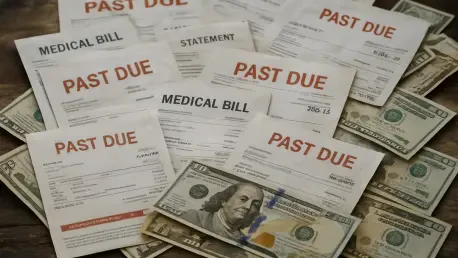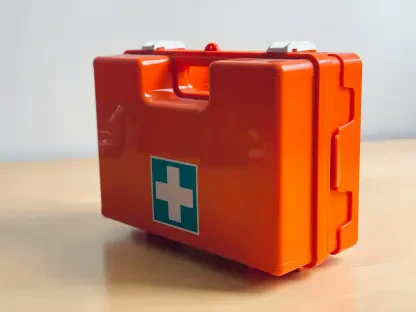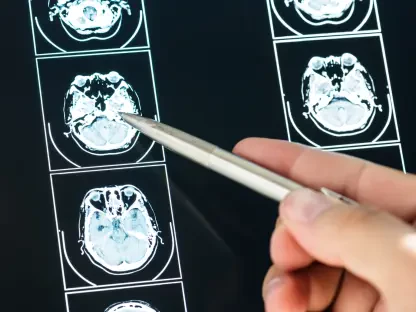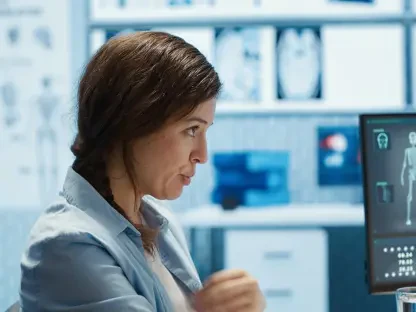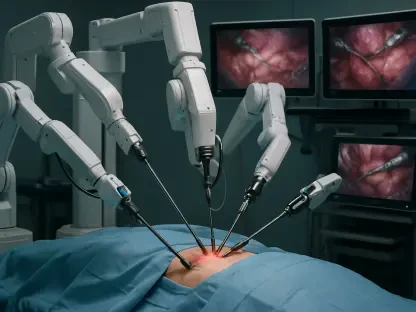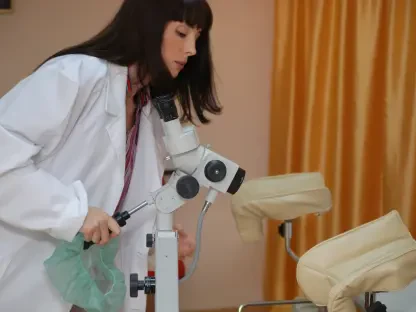Medical debt in the United States remains a daunting reality for millions, underscoring the urgency of addressing ballooning healthcare costs. With a staggering national debt totaling over $220 billion, the issue isn’t merely an isolated concern for those directly affected but a systemic flaw with wide-reaching implications. Nonprofit organizations have emerged as key players in this landscape, attempting to bridge gaps left by existing systems and policies. Amid discussions about their efficacy and reach, these organizations’ efforts highlight the pervasive nature of the crisis and the demand for far-reaching reform.
The Scale of Medical Debt in America
Pervasive Financial Strain on Households
Medical debt continues to impose significant financial and emotional burdens on countless families across the United States. This widespread phenomenon affects nearly 20 million Americans, highlighting the severity of the issue and the urgent need for structural changes. The financial strain is pronounced among lower-income communities and people of color, particularly in the South, where Medicaid coverage is less extensive. Individuals in these demographics often face higher healthcare costs due to a lack of comprehensive insurance and barriers to accessing needed medical services. This creates a cycle where untreated medical conditions escalate, leading to higher-than-necessary expenses.
Medical debt greatly diminishes the financial viability of affected families, exacerbating existing socioeconomic disparities. Individuals facing unpaid medical bills frequently employ drastic measures, such as depleting savings, incurring substantial credit card debt, or declaring bankruptcy. These actions not only impact their current fiscal well-being but also jeopardize their future financial stability and creditworthiness. This crisis further reveals the stark reality of healthcare inequities, as those from marginalized communities bear a disproportionate share of this burden, often due to preexisting systemic barriers.
Impact of Policy and Insurance Structures
Current insurance policies and healthcare expenses often leave families teetering on the brink of financial disaster due to the inadequacies of coverage and punitive pricing. The current insurance system traps many individuals with insurmountable out-of-pocket expenses stemming from high deductibles and copayments. Policy changes, such as adjustments to Medicaid eligibility, threaten to exacerbate this issue further. Many people face uncertain futures regarding their medical insurance, which could increase already overwhelming medical debt. Additionally, the racial aspects of this struggle emerge starkly, with statistics showing Black households endure similar debt levels to uninsured non-Black peers.
A recent legal reversal thwarted efforts to ease financial strain by removing medical debt from credit reports, which could have significantly impacted family finances. Nearly $49 billion worth of debt would have been erased from credit histories, potentially alleviating some financial distress for millions. Instead, this decision risks aggravating the financial turmoil already facing these families, highlighting the urgent need for policy that truly addresses the substantial medical debt challenge. This legal outcome underscores the ongoing tension between the need for protective measures and the reality of entrenched systemic hurdles.
Nonprofit Involvement in Mitigation
Nonprofit Strategies Against Medical Debt
Nonprofits have become critical players in the effort to alleviate medical debts, employing unique strategies to offer relief to individuals facing financial hardships. These organizations operate as a vital support network, devising targeted initiatives to address the debt crisis effectively. Among them, organizations like Undue Medical Debt and Dollar For engage in straightforward methods of medical debt forgiveness. They work by purchasing debt from healthcare providers at reduced costs, thwarting collection efforts and erasing financial obligations entirely. Such interventions rely heavily on donor support to sustain their operations and expand their reach.
These nonprofits provide invaluable support by guiding patients through the challenging process of claiming charity care or financial assistance. This proactive approach includes educating patients about their rights and the available assistance programs, which often go unclaimed due to a lack of awareness. Furthermore, these organizations extend their impact by advocating for transparency in hospital billing practices, pressing for greater accountability and consumer protection. This advocacy serves as a critical component in reshaping hospital policies to be more inclusive and patient-centered, although these efforts remain a band-aid on a pervasive problem.
Challenges and Constraints
Despite their noble efforts, nonprofits encounter significant hurdles that complicate their ability to address medical debt comprehensively and sustainably. One notable limitation is scale; while nonprofits can provide relief to thousands, the extent of American medical debt means they can touch only a fraction of the affected population. The funding ceilings and operational limitations restrict the breadth of their initiatives and the depth of relief they can offer. Consequently, while nonprofits play indispensable roles in addressing immediate financial emergencies, their efforts remain unable to fully dismantle systemic debt challenges.
The systemic nature of the crisis demands more than just charitable efforts, emphasizing the necessity to address underlying causes. Nonprofits often find themselves filling gaps left by a fragmented insurance system that fails to provide universal and equitable healthcare access. By offering interim solutions, they sometimes unintentionally mask the severity of the crisis, delaying more pressing calls for systemic reform. This underscores the critical need for broader national healthcare policy changes that prioritize accessible, affordable healthcare and ultimately reduce the circumstances leading to medical debt.
Long-Term Solutions and Advocacy
Advocacy for Systemic Reform
Long-term solutions to the medical debt crisis must center on sweeping reforms that ensure comprehensive and affordable healthcare. More than just temporary fixes, these solutions require policy changes that fundamentally reconfigure the healthcare system to prioritize patient needs above profits. Recent efforts have focused on expanding Medicaid and strengthening insurance coverage under the Affordable Care Act, though ongoing debates signal both progress and challenges. Such measures aim to decrease out-of-pocket costs for patients and broaden healthcare access, thus alleviating one of the primary sources of medical debt.
Advocates are increasingly calling for more robust healthcare reforms, arguing for legislative shifts that offer better protection against insurmountable medical expenses. These include capping out-of-pocket costs, controlling drug prices, and regulating hospital billing practices to foster greater transparency and fairness. Although comprehensive healthcare reform is a complex and politically charged issue, it remains a crucial step in ensuring equitable healthcare access and minimizing medical financial liabilities. By prioritizing these changes, healthcare reform can emerge as a decisive factor in reducing inequities and preventing future debt crises.
Nonprofits as Catalysts for Change
Nonprofits play a pivotal role in advocating for and catalyzing much-needed change, leveraging their influence to push for policy reform and greater social awareness. By highlighting individual stories and demonstrating direct action’s effectiveness, these organizations draw attention to the urgent need for structural changes. Their grassroots advocacy efforts raise awareness about medical debts’ underlying issues, engaging communities and policymakers in meaningful dialogues about sustainable solutions. In so doing, they act as both immediate relief providers and long-term reform advocates, ensuring medical debt remains at the forefront of national discussions.
Furthermore, nonprofits serve as models of compassion-driven healthcare interventions, exemplifying the impact coordinated community efforts can achieve. Through their initiatives, they showcase the potential for society to address such pressing issues collaboratively, setting a precedent for how future challenges might be tackled. While nonprofits alone cannot resolve the medical debt crisis, their determined actions create momentum for more comprehensive changes, encouraging broader societal involvement and political will. As these organizations continue their work, they highlight the essential need for collective action in addressing healthcare challenges comprehensively and humanely.
A Path Forward
Medical debt in America continues to be a daunting reality for millions, highlighting the critical need to manage skyrocketing healthcare expenses. With the national debt exceeding $220 billion, this challenge transcends being just an individual concern; instead, it reflects a systemic flaw with substantial implications for society as a whole. Nonprofit organizations have become pivotal figures in this scenario, striving to address gaps neglected by current structures and policies. These institutions, while sometimes debated regarding their effectiveness and reach, shed light on the widespread nature of the crisis and underscore the demand for comprehensive healthcare reform. Their efforts emphasize the urgent need for structural change and invite further dialogue about sustainable solutions. As healthcare costs keep climbing, these organizations play a crucial role in advocating for reform and ensuring that millions of Americans gain access to affordable medical care.
